10 of China's Ghost Cities Explained
 China is a nation with a big problem in regards to employment and living
conditions. Numerous unemployed workers are desperate for anything that will
bring them income, feed their families, and allow them to provide a secure and
comfortable home. It’s strange and sickeningly ironic that China has a strange
phenomenon with a number of massive, luxurious cities that are completely
uninhabited throughout the country, while millions who would happily live and
work in these cities are instead left to struggle just to get by day-to-day. China is a nation with a big problem in regards to employment and living
conditions. Numerous unemployed workers are desperate for anything that will
bring them income, feed their families, and allow them to provide a secure and
comfortable home. It’s strange and sickeningly ironic that China has a strange
phenomenon with a number of massive, luxurious cities that are completely
uninhabited throughout the country, while millions who would happily live and
work in these cities are instead left to struggle just to get by day-to-day.
The problem is that, while the cities were built in order to provide work and
shelter to Chinese citizens, these developments ultimately fail to attract
enough business to sustain city life. Basically, the development of the city is
way ahead of the economic opportunities and infrastructure.
Most of the apartments that get sold are bought by government officials or
wealthy businessmen intend to use the residences as either holiday homes,
investment properties or retirement homes. Furthermore, it doesn’t take long for
the few businesses that do set up shop in these cities to realize that there
isn’t, and likely won’t be any time soon, any secure customer base for them to
survive on.
As there is so little business throughout the cities, working professionals
find the prospects of living in the cities far too impractical. This makes China
the country with the world’s highest population. This is why it is odd that
people suffering from the economy avoid all of the large, sprawling cities that
are shockingly void of human life.

The logic behind building so many new cities all at once was because the
government felt in order to maximize space throughout the country; they needed
to relocate 400 million citizens from the into the new city locations. Thus,
began the expensive, risky, social experiment that has lead to this strange,
disastrous phenomenon of ghost cities.
10) Tieling New City
Tieling New City is a small metropolis situated in northeast China. After
spending billions on the ambitious project to establish the city itself and
clean up surrounding areas, the area is now a ghost town.
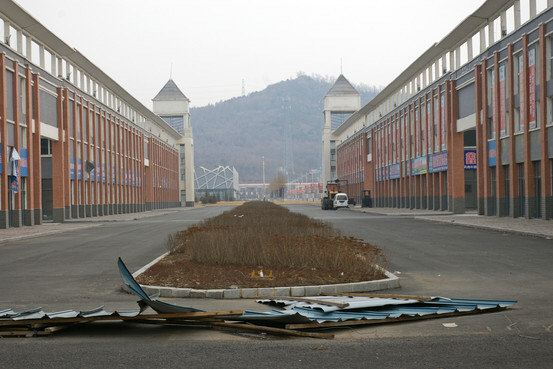
What little business
that was attracted to the city is gradually moving away, as owners are faced
with the options of moving or completely shutting down their establishments.
9) Jing Jin City
Jing Jin City is located about an hour from Beijing. It was one city expected
to be an attractive location for residents and businesses alike. This is because
of its easy accessibility off the Jing Jin Highway and for the luxurious
apartments that it has to offer.
Deserted Mansion in Jing Jin City
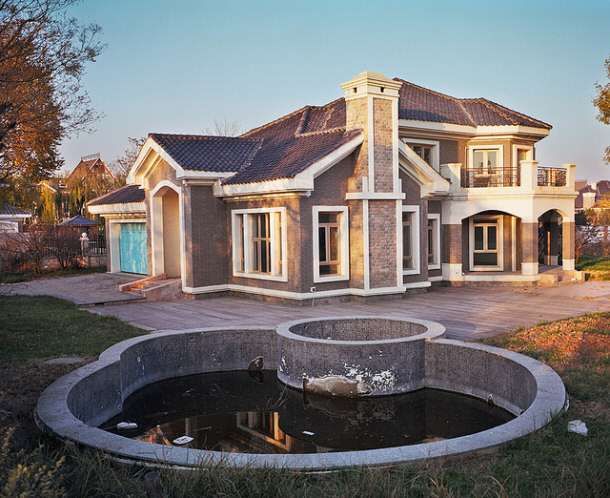
There is also a five star hotel and a golf
course. Furthermore, the city has two colleges, a temple and entertainment
facilities.
Close-up of Abandoned House and Small Swimming Pool

Still, while developers insist that the city is slowly growing, the
development is, in reality, largely uninhabited. And it appears that it will
stay that way. Nevertheless, the project is far from complete and developers are
pushing ahead with their plans to keep building. 4,000 more apartments are to be
built as well as a new business district that will be complete with many fast
food chains.
8) Kangbashi
The city of Kangbashi was built to house around one million citizens. Despite
the fact that a number of the residences have sold, the vast majority of the
city is uninhabited, as most the homes that were bought up as investment
properties or holiday homes.
Abandoned Street in Kangbashi
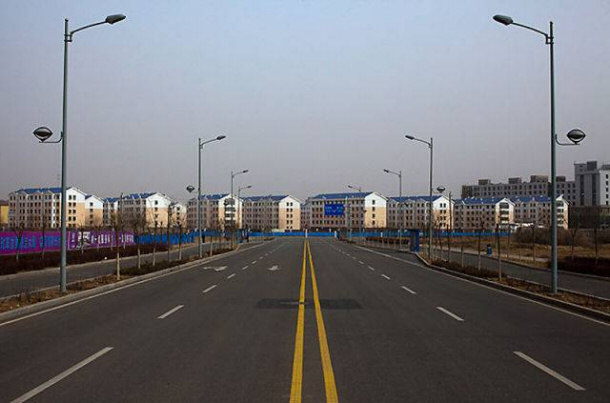
Abandoned Apartment High-rises in Kangbashi
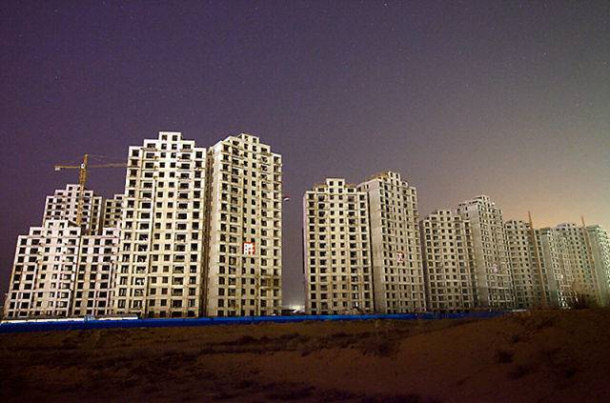
7) Bayannoaoer
Bayannoaoer is one city that was built with opulence in mind. It features an
elaborately designed town hall and water reclamation building, which is
sponsored by the World Bank. Though the city is somewhat populated, the vast
majority is devoid of citizens.
Inner Mongolia Bayannaoer Zijin Nonferrous Metal Co., Ltd
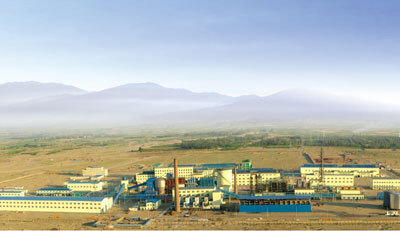
Despite its pleasing aesthetic, the city is
unable to overcome the fundamental problems when it comes to attracting working
professionals to a place with too little citizens and commerce to build on.
6) Dantu
Dantu is a city that has pretty much been empty for more than ten years.
While there are a number of neighborhoods that surround the complex, the vast
majority are also empty, with little to no signs of life.
Aerial View of Dantu

Of the neighborhoods
where a few citizens take residence, there is very little development.
5) Thames Town
The city of Thames Town is located in the Songjiang District. It was built in
2005 and inspired by the UK’s iconic Thames River. Many of the stores throughout
the Thames Town have gimmicky English names in an attempt to replicate the
streets of England.
Thames Town City Center

By Huai-Chun Hsu,
via Wikimedia Commons
Most of the stores are in fact empty and only appear from
the outside to be operational, as the area is largely unoccupied. While there
are luxurious apartments throughout, few are actually used for personal
residence.
Abandoned English Imitation Structures
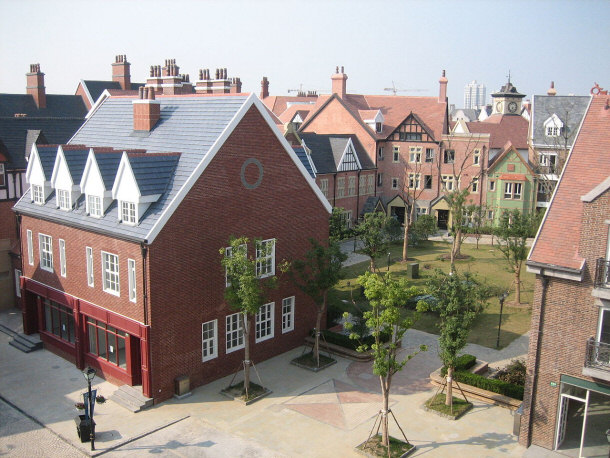
By Huai-Chun Hsu,
via Wikimedia Commons
It’s only because of the city’s novelty value that it sees a few tourists
visit every year, with the city proving popular for newlyweds who use landmarks
for backdrops to their wedding photos.
4) Zhengzhou New District
The Zhengzhou New District is a semi-complete city that was inspired by grand
ambition. It is a $19 billion development that features spectacular public
offices and blocks of upscale houses. Despite its luxuriousness, the city is
uninhabited.
Zhengzhou New District

By Earlyci,
via Wikimedia Commons
While the developers are hoping that the lack of residents is due
to the fact that only half of the area is completed, the likely explanation is
that the city is situated in the center of a desert.
3) Ordos
Of all of China’s elaborate places, Ordos is the most impressive. The
development is filled with numerous buildings, theatres, museums and sporting
fields. Throughout the city there are also a variety of upscale apartments. It
was designed to initially home around one million citizens, and grow from there.
Ordos International Racing Circuit Grandstand
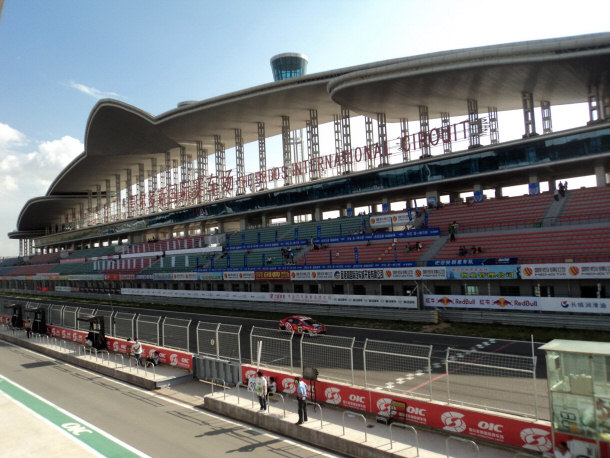
By Ngchikit
via Wikimedia Commons
Still, Ordos was never embraced as expected, with significantly fewer people
currently residing there. Cars are almost nowhere to be seen, other than in the
parking lots reserved for government officials.
2) Lanzhou New Area
Lanzhou New Area is a city that is currently under construction. In order for
the development to go ahead, the Chinese government has to approve to have 700
mountains of the Gansu Province leveled just to construct the city. The areas
deputy mayor insists that it will not be another ghost town like other
developments before it, despite the fact that it has all the warning signs that
this could very well be the case. He claims that the city will be fully equipped
and that it will raise the living standards of its citizens.
Lanzhou Current Structures
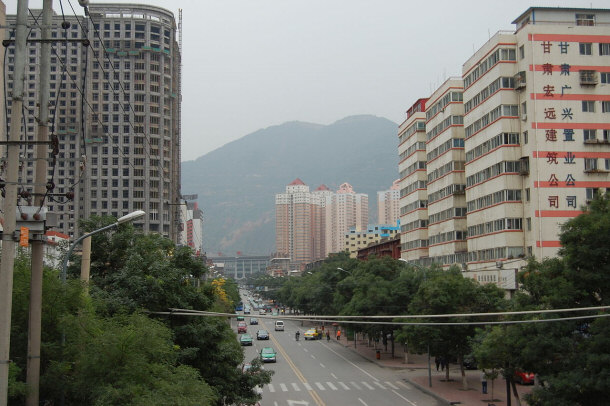
By Sigismund von Dobschütz,
via Wikimedia Commons
Rural migrants who are currently living on the outskirts of the Lanzhou New
Area are awaiting the outcomes. Most of them are farmers who have no say when it
comes to being relocated, given that their old homes are currently being
destroyed by the government, leaving them with nowhere else to turn.
Lanzhou New Area

1) Wonderland
Not that it was ever designed for the purposes of living, but the amusement
park Wonderland (which was a fake Disney World) is yet another example (and
perhaps the worst) of the nearsightedness the government and developers. The
project was abandoned halfway through the park’s construction. When you see just
what was built, it’s obvious that it was inspired by Disney World, given the
fairytale like buildings and streets.
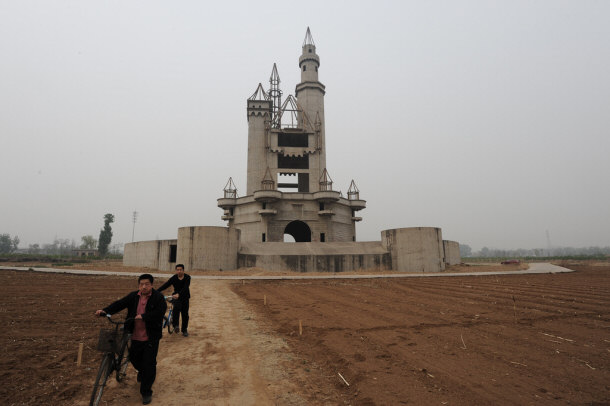
By Tormod Sandtorv
via Wikimedia Commons
Wonderland was expected to be a big
tourist card, but construction halted in 1998 because of disputes between local
farmers and government officials. This was an early example of poor property
development in the nation – a prelude to the ghost cities that would follow.

By Bertrouf,
via Wikimedia Commons
After standing for 15 years, semi-constructed and never having been used, the
structure was finally demolished this year. Both the development and the
ultimate demolition of the park may prove to be symbolic in the fates of China’s
ghost cities and the problems that may be insurmountable.
Conclusion
Despite the obvious flaws of the idea of building various cities before
infrastructure and commerce can be established, property developers and the
Chinese government are still pushing ahead with such projects. They feel that
the cities will eventually come to life, as it’s just a matter of time before
citizens and businesses make the developments into their homes. Many of the
cities have an inherent catch 22 in regards to their inability to attract
business because of the dwindling population. Furthermore, even when properties
within the cities do actually sell, they often still remain vacant, as they are
regarded as investments or holiday homes.
There certainly is a chance that it will all just be a matter of time before
life within the cities match those of other places across the country - and
maybe throughout the world. Whether that is true remains to be seen. What is
certain is the fact that China will continue, at least in the short term, to
struggle with this most unusual problem of ghost cities.
Culture
Top 15 Countries With the Strongest Military
15 Amazing Architectural Style Types From Old to Modern
Top 15 Countries with the Shortest Life Expectancy
Top 15 Countries with the Best Economy
Top 15 Things You Didn't Know about Chinese Culture
Top 15 Countries with the Longest Life Expectancy
Top 15 Most Spoken Languages Around the World
15 Unique Aspects of Mexican Culture
15 Unique Aspects of German Culture
15 Unique Aspects of French Culture
15 Unique Aspects of American Culture
15 Unique Aspects of Japanese Culture
15 Ways Americans are Different than Canadians
15 Little Known Facts About Australia
10 of China's Ghost Cities Explained
20 Little Known Religions and Cults
Preparation for the 3rd Temple in Jerusalem and End Time Prophecy
Top 15 Modern Day Pirates
15 Most Protected Areas in the World
|